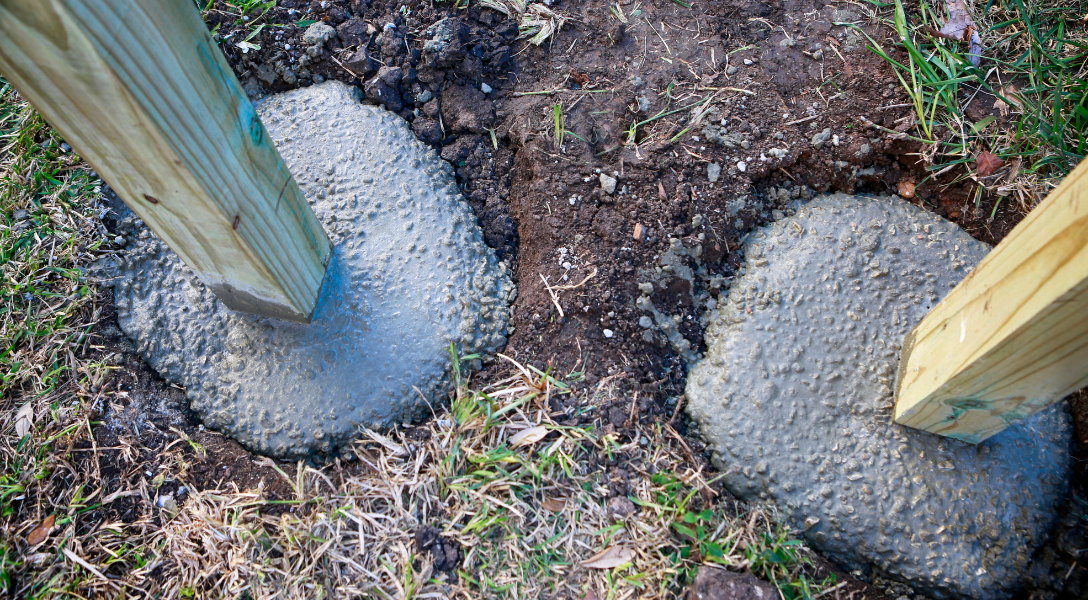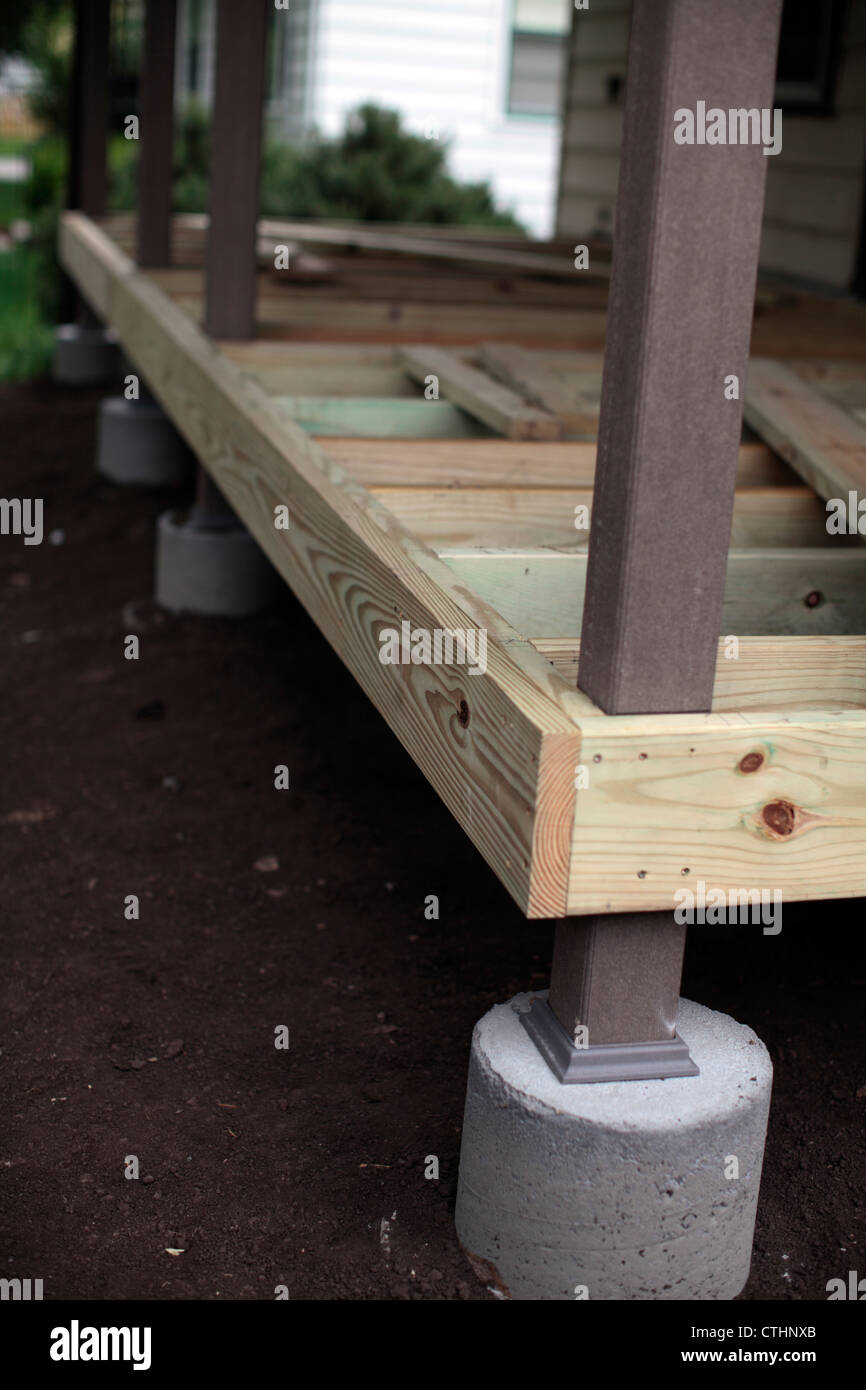Deck Footings 101: Navigating the Fundamentals for a Steady and Sturdy Deck
Deck Footings 101: Navigating the Fundamentals for a Steady and Sturdy Deck
Blog Article
Picking the Right Deck Footings for Security and Sturdiness
The durability and security of your deck depend heavily on the kind of footings you pick, as they give the crucial assistance and security to withstand the examination of time. In this conversation, we will certainly explore the various kinds of deck grounds, consider the crucial variables to weigh when making a choice, and dive right into the pros and disadvantages of various options.
Sorts Of Deck Footings
There are a number of kinds of deck footings that can be made use of, each offering one-of-a-kind benefits and factors to consider. One usual type of ground is the concrete pier footing. These grounds include a cylindrical opening filled up with concrete, which offers a strong foundation for the deck posts. Concrete pier grounds are fairly very easy to set up and provide exceptional stability, making them a popular selection for several deck tasks.
Another kind of ground is the helical heap footing. Helical heaps are steel shafts with helical plates affixed to them. These grounds are set up by screwing them into the ground, which develops a safe foundation for the deck. Helical heap footings are optimal for areas with challenging dirt conditions, as they can be installed in practically any kind of kind of dirt. If required., they likewise permit for very easy modification and progressing of the deck.
Conversely, some builders select precast concrete footings. These grounds are constructed from long lasting concrete and come in different shapes and sizes to accommodate different deck styles. Precast concrete grounds are convenient to set up and give a steady base for the deck framework.
Finally, another option is the post-in-anchor ground system. This sort of footing involves driving a metal anchor right into the ground and connecting it to the deck message. It provides adaptability in regards to positioning the deck messages and is suitable for decks with light-weight structures.
When choosing the right kind of deck footing, it is vital to consider elements such as dirt conditions, deck tons, and local building regulations (Deck Footings). Consulting with an expert service provider or structural designer can aid ensure the suitable footing is chosen for a safe and steady deck
Variables to Take Into Consideration When Selecting Grounds
When selecting the suitable footings for a deck, it is critical to very carefully think about various aspects such as dirt conditions, deck load, and adherence to neighborhood building codes. These aspects play a significant role in making certain the security and toughness of the deck framework.
The kind of soil on which the deck will be constructed determines the kind of footings needed. On the other hand, decks constructed on clay or extensive dirts might call for footings that can suit the soil's propensity to increase and contract.
An additional vital aspect is the deck load. The weight of the deck, consisting of the products utilized and any kind of possible live lots such as furnishings or celebrations, must be taken into account when selecting footings. The footings need to be made to bear the weight of the deck and disperse it equally to avoid any structural concerns or failings.
Last but not least, adherence to neighborhood building ordinance is paramount. Building codes differ from area to region, and it is important to abide by the details needs established by the neighborhood authorities. Deck Footings. These codes make certain that the deck is constructed safely and fulfills the necessary requirements for structural stability and load-bearing capability
Concrete Footings: Cons and pros

Concrete footings provide a number of benefits and downsides when utilized as the structure for a deck. On the positive side, concrete footings supply excellent security and toughness.
Another advantage of concrete footings is their versatility. They can be put into different forms and sizes to fit various deck layouts and configurations. Concrete footings can be tailored to fit the specific demands page and needs of the deck framework.
Nevertheless, there are likewise some disadvantages to utilizing concrete footings. This can boost the general expense of the deck job and may need professional support.

Helical Piers Vs. Sonotubes: Which Is Better?
In taking into consideration the structure alternatives for a deck, the comparison in between helical piers and sonotubes is important in establishing the superior choice. They are twisted right into the ground using hydraulic equipment, supplying a long lasting and steady structure for the deck.
The helical plates on the piers produce a strong grip with the soil, stopping any type of movement or moving of the deck. Sonotubes, on the various other hand, rely only on the concrete loading for security, which may not offer the exact same level of stamina and resistance.
In terms of installment, helical piers are relatively less complicated and faster to set up contrasted to sonotubes. The hydraulic equipment made use of to turn the piers right into the ground guarantees a fast and efficient procedure. Sonotubes, on the other hand, call for excavating openings and pouring concrete, which can be labor-intensive and lengthy.
Additionally, helical piers are a more flexible choice. They can be used in different dirt conditions and can be adjusted or reinforced if needed. Sonotubes, on the various other hand, might need added assistance, such as rebar, in particular soil conditions or areas with high lots demands.
Picking the Right Footings for Your Deck's Dimensions
For optimum structural stability, it is vital to meticulously pick the suitable grounds that straighten with the dimensions of your deck. The measurements of your deck, including its size, size, and elevation, play a considerable role in figuring out the kind and size of grounds required.
When selecting footings for your deck, it is vital to consider the load-bearing capacity of the soil. The weight of the deck, combined with the weight of any type of furniture or individuals on it, puts in a significant force on the footings (Deck Footings). It is essential to select footings that can sufficiently support this weight without shifting or sinking over time.
The size and shape of the footings need to additionally be taken into consideration. Larger decks with better dimensions need larger footings to provide adequate security and assistance. The form of the footings, whether they are square or rounded, depends on the layout and format of the deck. In addition, the deepness Full Report at which the footings are set up need to be figured out based on the frost line in your area to avoid any heaving or changing as a result of freezing temperatures.
Verdict
In verdict, choosing the appropriate deck grounds is vital for making certain stability and longevity. Variables such as the kind of footings, the deck's measurements, and the pros and cons of different options sites must be thought about.
These footings consist of a cylindrical opening filled with concrete, which supplies a solid structure for the deck blog posts. Concrete pier grounds are fairly easy to mount and supply superb stability, making them a prominent option for many deck projects.
Precast concrete grounds are convenient to set up and offer a stable base for the deck framework.
It uses versatility in terms of positioning the deck blog posts and is appropriate for decks with light-weight structures.
Concrete grounds offer numerous advantages and drawbacks when used as the structure for a deck.
Report this page